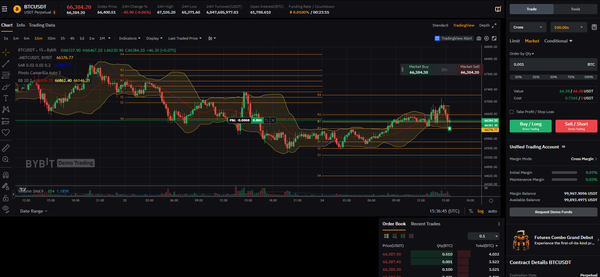Bitcoin's Remarkable Performance Against Traditional Asset Classes

In the dynamic investment world, traditional assets like gold, equity, and bonds have long been the cornerstones of diversified portfolios. However, the emergence of Bitcoin has introduced a new player to the field, which has shown a striking performance over the past decade. Today, we will delve into the data that illustrates Bitcoin's impressive journey compared to traditional asset classes.
A Decade of Growth for Bitcoin
Since its inception, Bitcoin has been a subject of controversy, excitement, and incredible volatility. What cannot be denied, however, is its substantial growth. From 2011 to 2023, Bitcoin has repeatedly claimed the top spot in annual performance when pitted against traditional assets.
The Early Years: A Spectacular Rise
The data from 2011 to 2013 reveals an asset that, while not yet widely understood or accepted, showcased phenomenal gains. In 2011, Bitcoin's growth was recorded at an astonishing 1,319.09%, far surpassing the nearest competitor, gold, which had a respectable but modest return of 10.10%. This trend continued, with Bitcoin achieving a 217.26% increase in 2012 and an eye-watering 5,537.40% in 2013.
Outperforming Assets in Volatility
Despite its volatility, Bitcoin has demonstrated resilience and capacity for recovery. Even in years where it did not lead the pack, such as in 2014 and 2015, it remained a significant player. In 2017, Bitcoin soared to new heights with a 1,414.10% increase, dwarfing the returns of U.S. REITs and EM Equity, which stood at 3.77% and 37.75% respectively.
Bitcoin in Recent Years
The trend of dominance continued into the next decade, with Bitcoin outperforming all other asset classes in 2019, 2020, 2021, and 2023. Notably, in 2020, during a year marked by global economic uncertainty, Bitcoin surged by 308.17%. Even in 2021, when it saw a lower but still significant increase of 57.25%, it outperformed commodities, the next closest asset, by a substantial margin.
Traditional Assets: A Comparison
While Bitcoin's growth is undeniably impressive, it's important to contextualize its performance with that of traditional assets:
- Gold: Often seen as a safe haven, gold's performance has been stable. It took the lead in 2018, a year when Bitcoin had negligible growth. However, its highest annual growth in the observed period was 26.92% in 2020, which pales in comparison to Bitcoin's numbers.
- U.S. Equity: A cornerstone of many investment portfolios, U.S. Equity has shown consistent growth over the years but was outshone by Bitcoin's returns. Its best performance within this timeframe was in 2013, with a 32.39% return.
- Bonds and REITs: U.S. Bonds and REITs have provided investors with steady, albeit lower, returns. They are typically considered less risky than equities and certainly less so than cryptocurrencies.
Conclusion: The Rise of a New Asset Class
The data presents a clear narrative: Bitcoin has repeatedly outperformed traditional asset classes over the past decade by significant margins. While it's important to acknowledge the inherent risks and volatility associated with Bitcoin and other cryptocurrencies, the potential for high returns has attracted both individual and institutional investors.
Investors looking to capitalize on the growth of digital assets have increasingly considered Bitcoin as part of their portfolios. However, with great potential returns comes great risk, and the savvy investor must weigh this balance carefully.
As we move forward, it will be fascinating to watch how Bitcoin continues to interact with traditional investment assets. Will it maintain its lead, or will the ever-changing landscape of global finance bring new challengers to the forefront? Only time will tell, but for now, Bitcoin's performance remains a remarkable phenomenon in the world of investment.





